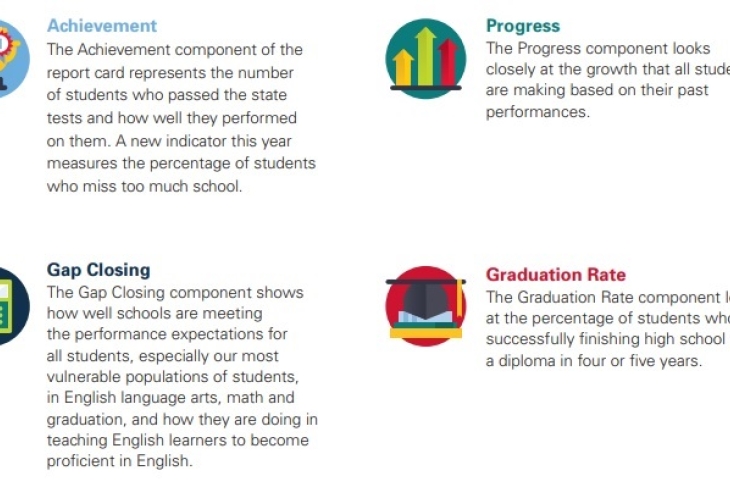The debate about effective and equitable school discipline policies, fueled by a 2014 Dear Colleague letter from the Obama Administration, continues to weigh heavily on the minds of school reformers. As educators and lawmakers referee competing concerns about discipline and equity, we need more information about what states are doing. The Education Commission of the States (ECS) has released a report on each state’s current school discipline policies; their findings highlight the movement against out-of-school suspension and provide a peek into how states are addressing recent concerns about racial inequality in the dispensation of discipline.
ECS developed eight key questions to compare school discipline policies between states. Among these are whether and how exclusionary discipline (suspension or expulsion) is limited, what non-punitive or positive behavior support mechanisms are in place, and what discipline reporting requirements exist. For answers, they combed through statutes in all fifty states and the District of Columbia and synthesized their findings into tables organized by state and key question. The product is a comprehensive, user-friendly snapshot of the state of school discipline around the nation.
When it comes to exclusionary discipline, state policies vary widely; only sixteen states plus the District of Columbia limit exclusionary action by grade level, and only seventeen plus the District of Columbia prohibit suspension or expulsion over attendance issues. State legislatures are somewhat more unified on the use of non-punitive disciplinary strategies. Thirty states and the District of Columbia encourage leaders to use “specific, evidence-based interventions,” such as social-emotional learning and Response to Intervention (RTI), either before or alongside punitive action. A majority of states also spell out reporting requirements for disciplinary actions, although the level of detail ranges from merely logging suspensions in the case of violence to disaggregating all disciplinary events by demographic category.
Ohio, the great state from which the Thomas B. Fordham Institute hails, is one of those that bans entirely suspension for attendance issues, and in November 2018 it will prohibit suspension for any reason before fourth grade. Reports on suspensions and expulsions are already mandatory. November is also the deadline for the State Board of Education to update its current positive behavior support initiatives and policies.
After a flurry of discipline reform efforts earlier this year, Washington, D.C., has a number of suspension limitations and mandatory non-punitive discipline alternatives. By 2020 suspension will be strictly limited even at the high school level, and it is already nearly eliminated in grades K–8. Any disciplinary action must go hand in hand with non-punitive support measures, including conflict resolution strategies and parent-teacher conferences. D.C.’s reporting requirements are robust, calling for data files on each student and an annual summary of disciplinary actions disaggregated by demographics.
As ECS acknowledges, these data look only at state-level policies, even though many of the discipline strategies students encounter come out of individual districts. (We can hardly blame the researchers for choosing not to investigate the policies of each of the country’s 13,000+ school districts!) The overview is nevertheless helpful in gaining an understanding of basic trends in student discipline policy, particularly in the wake of the 2014 Dear Colleague letter. Whether or not the Trump Administration maintains, revises, or rescinds it, state policies are here to stay.
SOURCE: “50-State Comparison: State Policies on School Discipline,” Education Commission of the States (August 2018).










